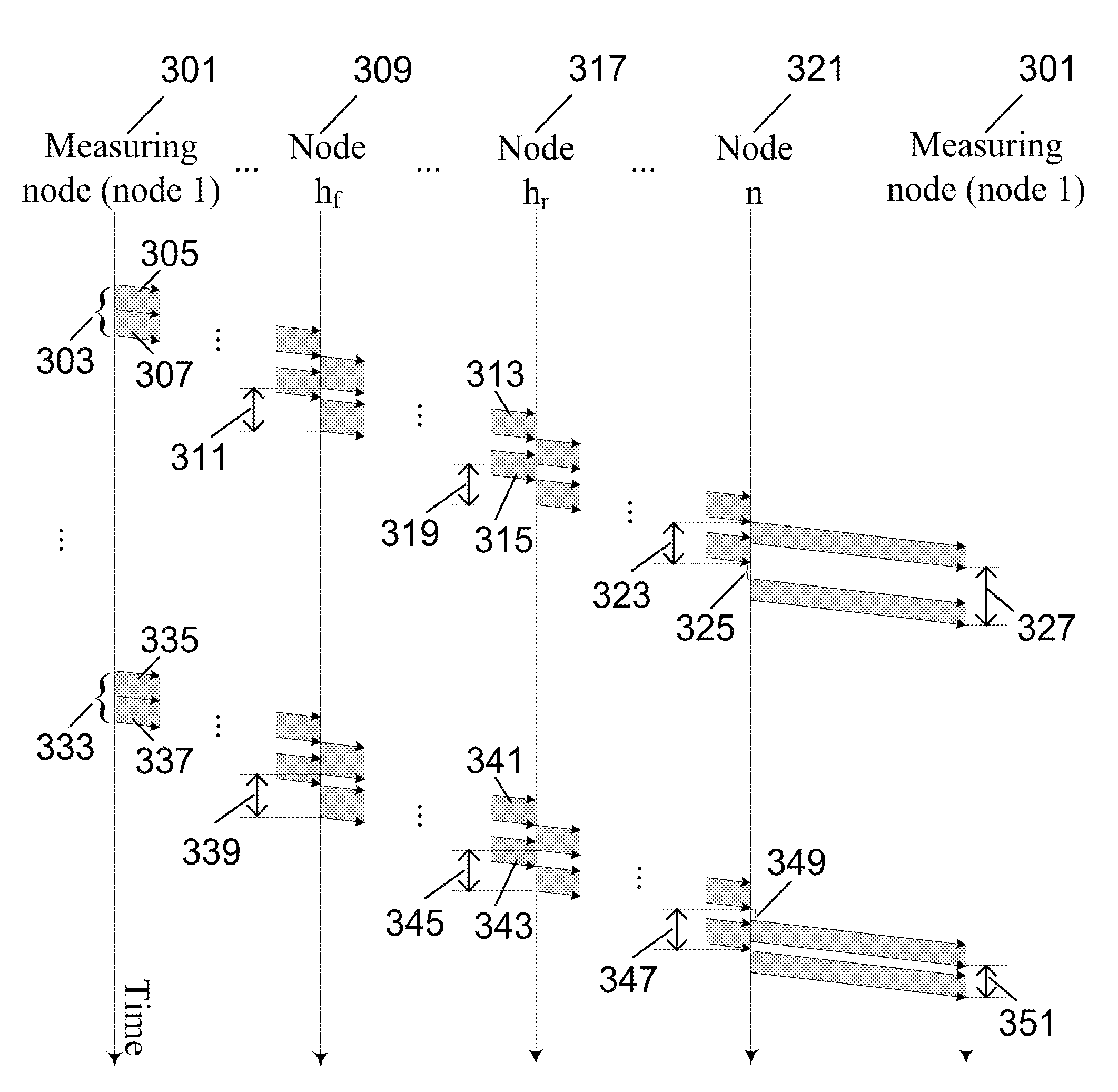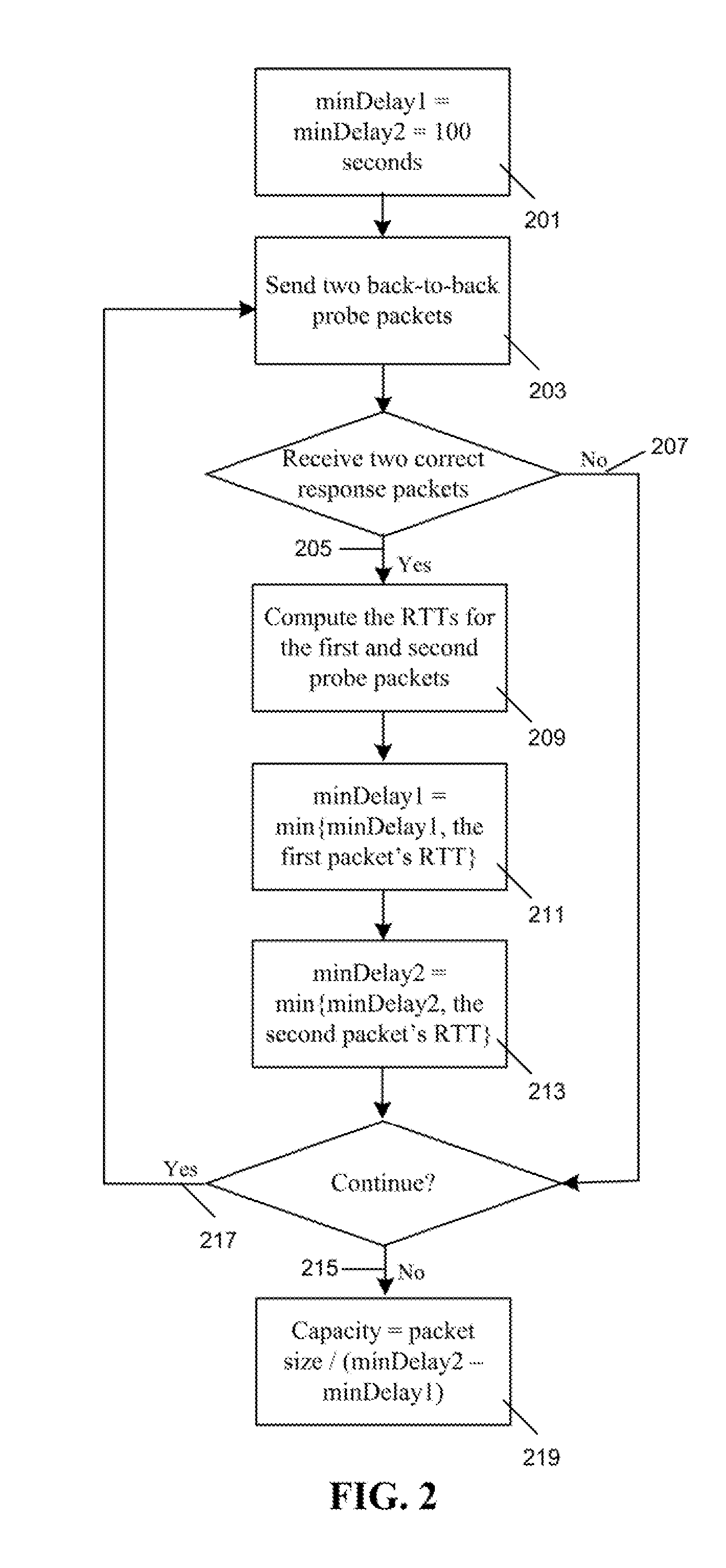Method for measurment of network path capacity with minimum delay difference
a network path and delay difference technology, applied in the field of network path capacity measurement, can solve the problems of long time for obtaining a capacity, difficulty in measuring capacity, adverse effects on accuracy and speed, etc., and achieve the effect of less storage and computation, less probe packets, and more effective utilization
- Summary
- Abstract
- Description
- Claims
- Application Information
AI Technical Summary
Benefits of technology
Problems solved by technology
Method used
Image
Examples
Embodiment Construction
An Overview
[0036]FIG. 1 is a block diagram illustrating a particular embodiment in accordance with the present invention. It comprises a measuring node 101 and a remote node 103. The measuring node 101 sends two back-to-back probe packets 127 and 129 to the remote node 103 through a network 105 which usually includes multiple hops (such as, routers and switches). The remote node 103, in response to receiving 127 and 129, sends two response packets 131 and 133 to 101. There are n (where n≧4) nodes on the forward path 107 and the reverse path 113, including 101 and 103. The measuring node 101 first sends the probe packets to network node 109, and network node m 111 (where 1≦m127 and 129 to the remote node 103. In response to receiving 127 and 129, the remote node sends the response packets 131 and 133 to network node M+2 115 and network node n 117 subsequently forwards the response packets 131 and 133 to the measuring node 101.
[0037]The forward path 107 and reverse path 113 together c...
PUM
 Login to View More
Login to View More Abstract
Description
Claims
Application Information
 Login to View More
Login to View More - R&D
- Intellectual Property
- Life Sciences
- Materials
- Tech Scout
- Unparalleled Data Quality
- Higher Quality Content
- 60% Fewer Hallucinations
Browse by: Latest US Patents, China's latest patents, Technical Efficacy Thesaurus, Application Domain, Technology Topic, Popular Technical Reports.
© 2025 PatSnap. All rights reserved.Legal|Privacy policy|Modern Slavery Act Transparency Statement|Sitemap|About US| Contact US: help@patsnap.com



